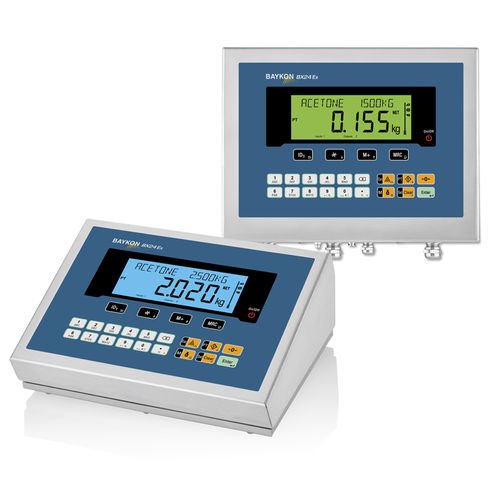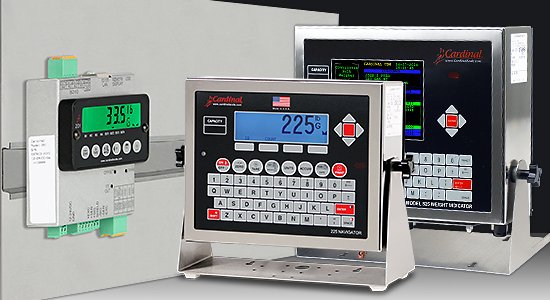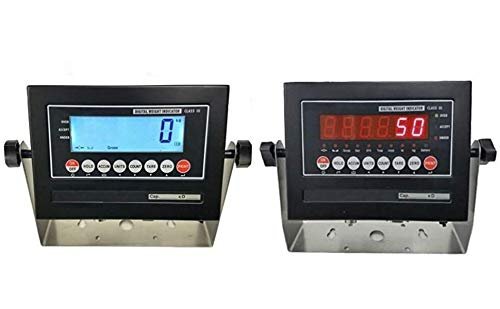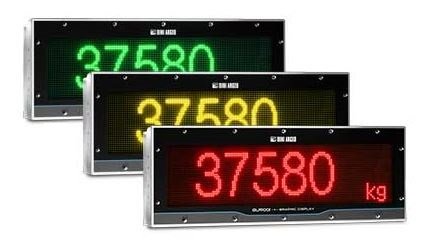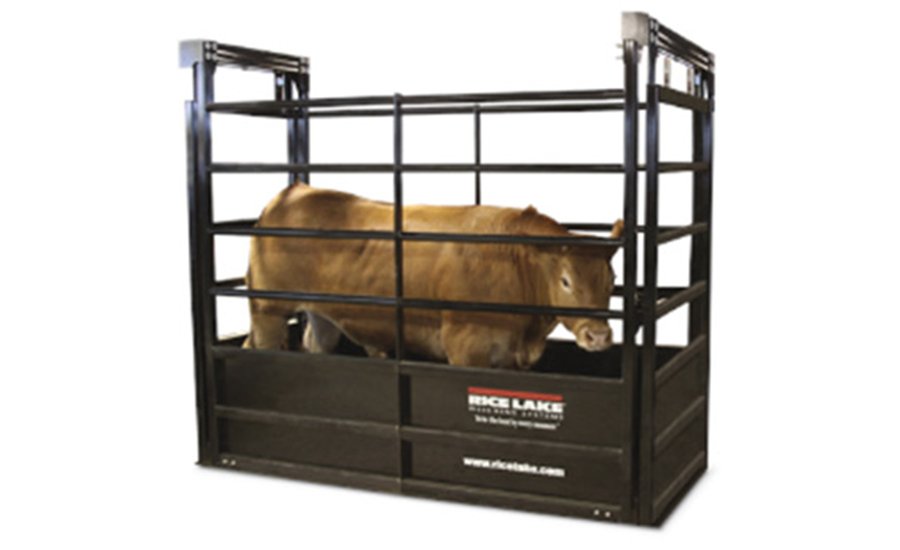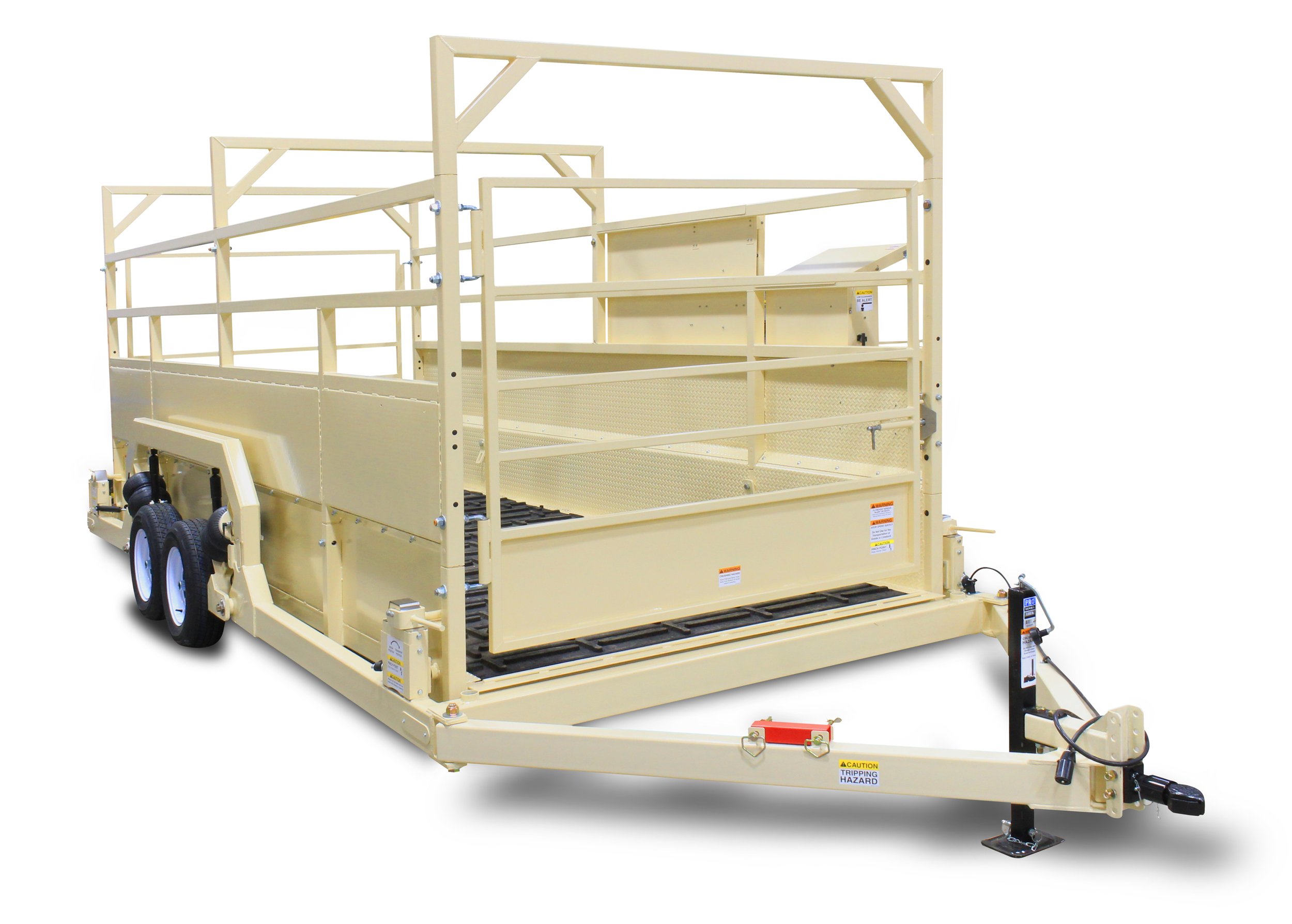The Guide To Scale Indicators
An industrial scale indicator is an important part of a legal for trade scale and helps collect and read information. A well maintained indicator can cause your weigh operation to run smoothly. Essentially an indicator can come with a lot of options or features that can include things like check weighing and counting. Ultimately the scale indicator is like the controller for a scale. It can provide weight values as well as perform specific tasks when collecting weigh data.
Weight indicators are digital or analog display devices that indicate the weight of an object located on a connected scale. The weight and measurements standards are created and maintained by the National Conference on Weights and Measures (NCWM). The standards are a way to keep things in order and hold up safety standards. Scale indicators are used in commercial and industrial applications to display the weight of products of various sizes. The devices offer a number of display variations to match the requirements of their many applications.
The use of scales has been around for a very long time. Granted the technology has advanced by leaps and bounds, the basis of scale usage is still the same. For the longest time scales were analog and were equipped with analog displays. Spring scales with analog displays were used a lot by shipping and parcel companies, because it helped increase overall efficiency. With the advancement of technology, digital weight indicators started to become the standard in industrial scales.
INDICATOR TYPES
Weight indicators are available with a wide variety of features designed for specialized applications. Depending on the application and the type of device needed will determine the primary functions needed. Weight indicators are programmed to work with different scale types to work with a scale system and vary in type by a digital or an analog readout. An intricate indicator will be able to connect to a scoreboard/remote display or even monitor electronic load cells for scale calibration. Being able to connect to the junction box and monitor different aspects of the scale is a benefit for the operation as a whole. There are other features that can be included with an indicator like counting, checkweighing and wireless functionality.
Modern weight indicators are generally used in industries such as industrial, factories, warehouses, shipping and receiving, food, chemical, energy and just about any other industry where materials are being weighed.
One misconception to those new to industrial scales is that the indicator does everything. In reality, the weight indicators are not the ones that perform the weighing of an object. What happens is that the devices convert the weight measured by load cells into a digital readout. Essentially, weight indicators are like the computer for the scales.
INDICATOR FEATURES
Indicators can come with a lot of features, depending on how you get them optioned. Weight indicators are grouped in accordance with their features.
Several features of weight indicators include:
Washdown enclosures
Size of the digital readout screen
Light Emitting Diode (LED) Display
Configurable analog to digital measurement rate
Numeric keypad
Three-stage digital filtering
Various mounting options
The majority of weight indicators are optimized for a certain set of measurements. The figures will vary depending on the application. The indicator used for a bench scale will be optimized differently compared to an indicator optimized for weighing vehicles. Various indicators work automatically for use in unmanned weight terminals as well as units equipped with keypads or more advanced user interfaces. The additional features of advanced user interfaces provide more control to account for climate and unique material variations.
You will also find that Indicators equipped with oversized displays are used so they can be seen at distances of up to 50 feet or more. Industrial indicators usually feature a stainless steel casing. This is designed to allow the indicator to operate in extreme environments. Materials avoid rust, corrosion and degrading effects caused by excessive heat and wet conditions. There is also a washdown option for indicators as well. This encases the indicator making it completely sealed and is rated with an IP rating. These are used for environments where there is a lot of high powered washing and drastic temperature changes.
INDICATOR APPLICATIONS
There are a wide variety of commercial and industrial applications for weight indicators. You will find indicators used in these following industrial applications:
Bench scale applications
Floor scale applications
Tank or hopper scale applications
Overhead track scale applications
Truck scale or other transfer station applications
Ready mix and concrete products dispensing applications
Weigh house applications such as landfills or recycling centers
Weigh lock applications (used in weighing canal barges)
Tax, postage, freight and other cost levying applications
Industrial process control applications
Mining applications
INDICATOR SPECS
Industries can require specific features out of weight indicators. Pairing the features and specifications to the right indicator will ensure that your operation is running efficiently.
Typical specifications of weight indicators include:
Maximum weight output
Hardware compatibility and other device compatibility measures
Primary power source or alternate power source options
Display type, size, brightness and clarity requirements
The interior of weight indicators includes electronic components and solid-state devices similar to those found in a computer. These materials normalize the flow of electricity and store, process and transmit data necessary for display. Circuitry comprises resistors, transistors, diodes, memory chips and various processing units that work together to perform the functions of the indicator. The electronics are silicon based with tin, silver or gold leads connecting them to main circuit boards. Circuit boards are manufactured from fiberglass and plastics. Several wires and controller ribbon cables made of flexible rubber and plastic work to connect displays and send input data and output data. Base units, springs and other mechanical pieces consist of metals such as stainless steel, durable plastics or polycarbonate materials.
The majority of weight indicators are appropriate for general-purpose weighing uses. However, certain applications require a device with tailored features to make sure it is suitable for the job. If the application involves weighing massive objects, choose an indicator with a high maximum weight display. For harsh outdoor conditions, there are many models with durable, washdown enclosures. Some devices are optimized for highly specialized uses like weight-based admixture dispensing.
Calibration and standards for weight indicators depend on which piece of equipment is being used. Each device must be calibrated to the weight scale system it operates with. Based on the weighing application the devices are designed to work with, weight indicators each have their own calibration and standards. Consult manufacturer’s guidelines to determine the calibration and standards requirements.
CONCLUSION
Ultimately, a scale indicator is a tool used to measure weight and track other measurements, thus making the work move efficiently. There are a lot of factors to consider when looking for an indicator. Understanding the application that your indicator will be paired with can simplify your search and eliminate any unneeded extras or options from your search. If you are in the market for a new indicator or want to learn more about what options are available, then it is highly recommended that you check out our article on scale accessories as well as heading over to our scale accessories on our product page.
At American Scale we strive to bring you informed and useful content on all things scale systems related, including products from the top scale manufacturers. Be sure to check out our truck scale articles about truck scale foundation or how much do truck scales cost. We even have a guide to warranties. To learn more about bench scales, it would be good to check out our other articles such as “Bench Scale Basics'' and “How Much Does A Bench Scale Cost?”. These articles will help with the basics of bench scale ownership. Also, take a look at our“Common Problems With Bench Scales'', to help prolong the lifespan on your scale.

